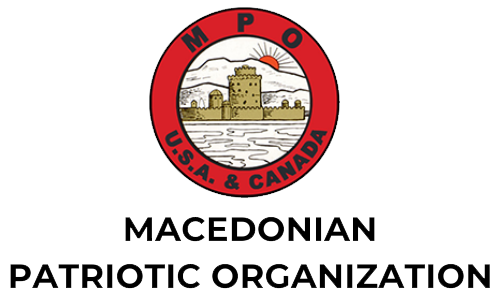Macedonian History
Ancient History
Macedonia has a long, rich history dating back to biblical times. In fact, Macedonia is mentioned at least 23 times in seven books of the Holy Bible. The Macedonian region, located in south-central Balkans, is comprised of northern Greece, southwestern Bulgaria, and the independent Republic of North Macedonia.
Its ancient history has been traced back to ~2000 B.C. when the Indo-European people settled the region, making it their kingdom, Macedon.
Our Fight For Autonomy
Macedonia, under the Ottomans, was essentially a geographic region, not an ethnographic one. Macedonia was populated by a number of different ethnic groups including Slavic Bulgarians, Turks, Greeks, Arumanians (Vlakhs), Albanians, and Sephardic Jews. The largest of these ethnic groups was the Slavic Bulgarians. Macedonians are natives or descendants of any one of the above-mentioned ethnic groups.
The Ottoman’s inability to create and implement reforms that would improve the lives of our ancestors ignited the fight for autonomy. As the Ottoman Empire fell, our ancestors fight for autonomy turned to a fight for freedom and independence as Macedonia became the target of Greek, Serbian and Bulgarian expansion, each claiming closer ethnic or historical ties than the others.
Such conflict and persecution led many Macedonians to leave their homeland and immigrate to North America and Australia. Over time, they began to demand and lobby the world’s great powers to help in the establishment of a free and independent Macedonia. The Macedonian Patriotic Organization (MPO) was established in 1922 for this very reason.
In 1991, independence finally came to a portion of Macedonia!
Our Recent History
Eventually, those Macedonians who had immigrated to North America and Australia began to demand and lobby the great powers of the world to help in the establishment of a free and independent Macedonia. The Macedonian Patriotic Organization (MPO) was established in 1922 for this very reason.
The Macedonian TimeLine
Macedon established as a kingdom under the leadership of Philip II and his son, Alexander the Great
Macedonia conquered by the Roman Empire and became a Roman province
Macedonia became part of Eastern Roman Empire, eventually known as the Byzantine Empire
St. Cyril and St. Methody, along with their disciples, St. Kliment of Ohrid & St. Naum, spread Christianity in the Slavonic language
Chronic wars ensued for control of Macedonia
Macedonia became part of the Ottoman Empire and remained part of it for 500 years
Internal Macedonian Revolutionary Organization (IMRO) founded to establish Macedonia as an autonomous state
Ilinden Uprising, a significant but unsuccessful rebellion
Two successive military conflicts that deprived the Ottoman Empire of almost all its remaining territory in Europe, including the Macedonian region
The Treaty of Bucharest ended the Second Balkan War and divided the Macedonian region among Greece, Serbia, and Bulgaria |
Macedonia region in Serbia declares independence from Yugoslavia; however, naming disagreements resulted in the name the Former Yugoslav Republic of Macedonia
Republic of North Macedonia selected to formally end naming disagreements

